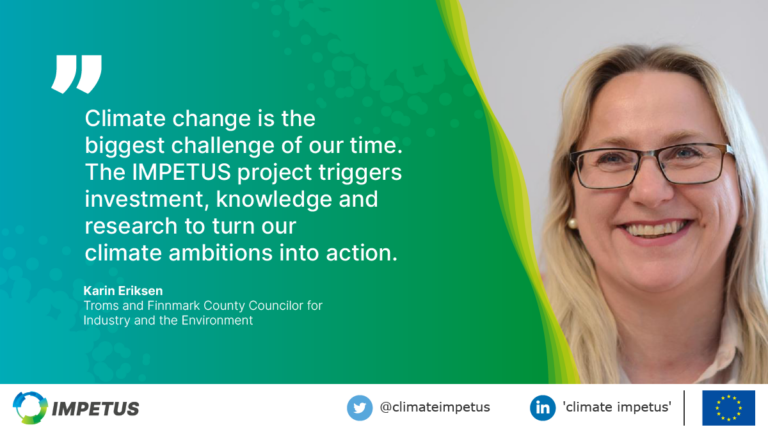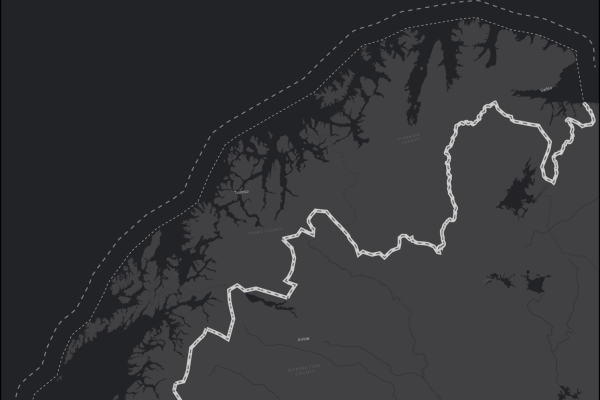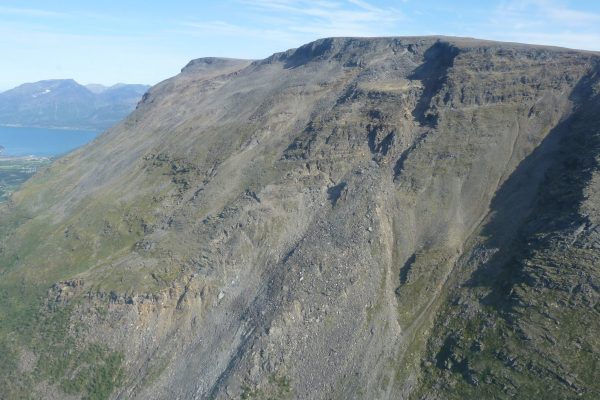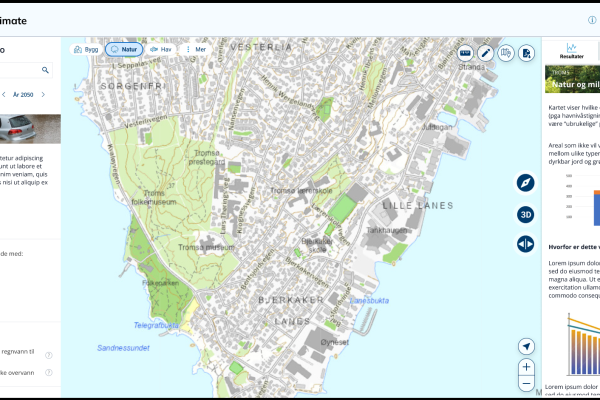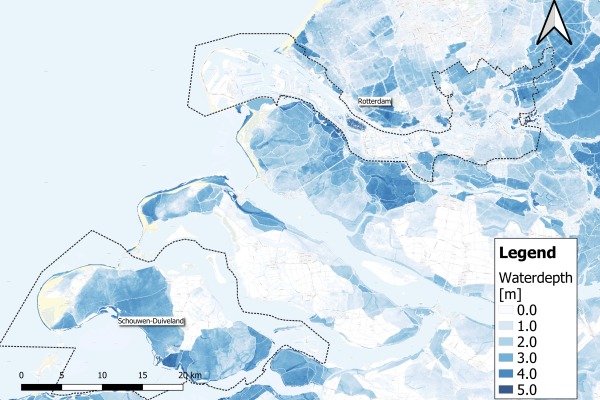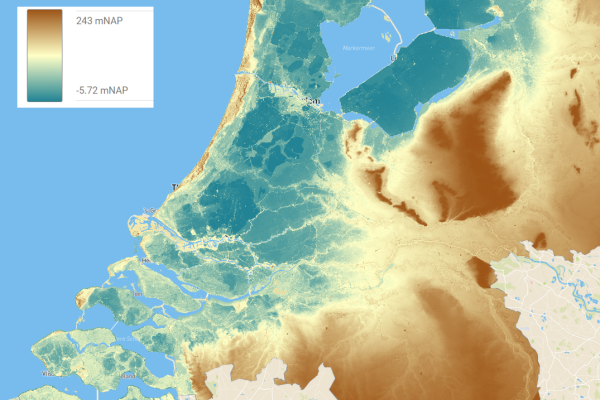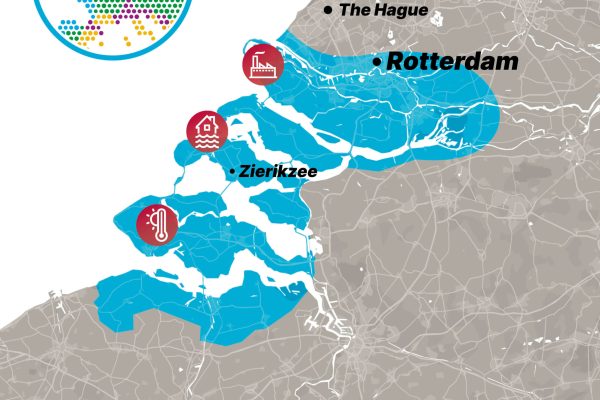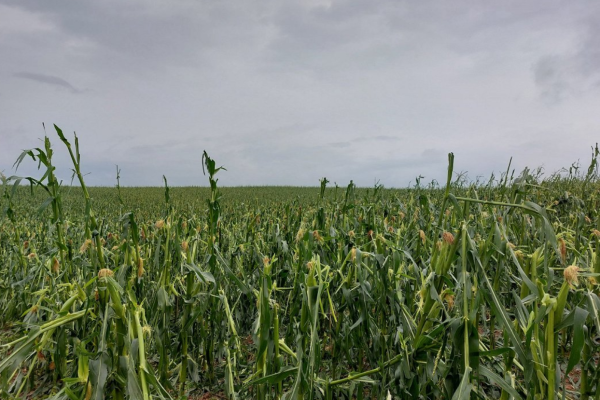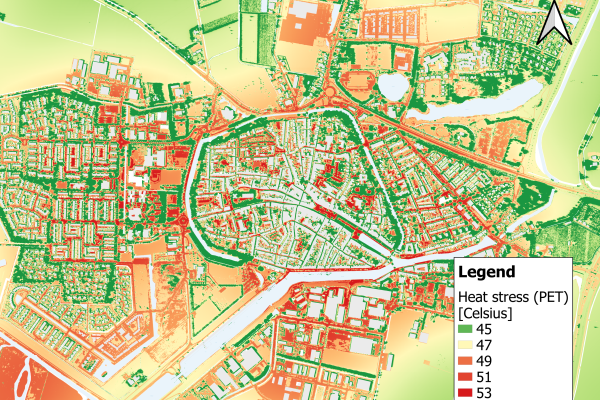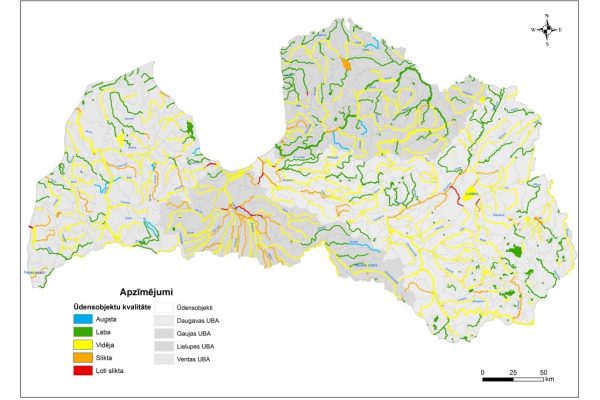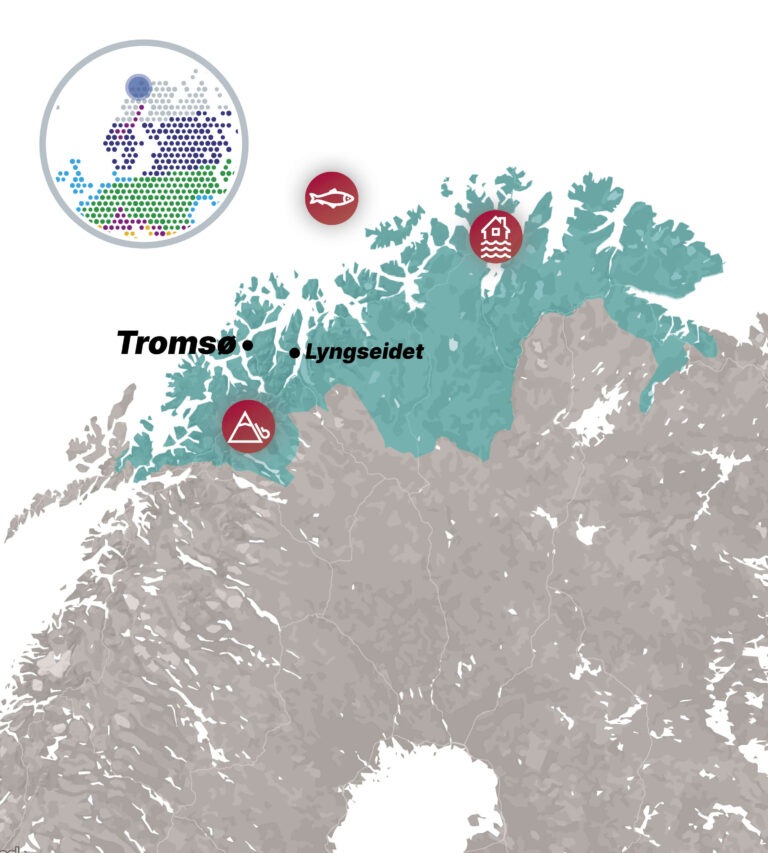
Prognosis
260 %
higher losses from disasters such as landslides in the past ten years, compared to the previous 30 years in Norway.
With winter temperatures already 4-5°C higher than the 20th Century average, the rapidity of climate change is already well perceived and adaptation plans are being developed.
Situation
Beyond the Arctic circle, in the northernmost mainland region of Norway, the IMPETUS Arctic demonstration site in Troms and Finnmark County shares its eastern borders with Sweden, Finland and Russia.
Fisheries, aquaculture, tourism, mining, oil and gas and reindeer herding are the largest economic sectors. With fewer than 250,000 residents in more than 70,000 km2 of land, communities and infrastructure are nevertheless at risk from landslides, rockfalls, avalanches and fjord tsunamis triggered by climate-change-driven changes such as warming, intense precipitation, unstable snow cover, glacial retreat and sea level rise.
Climate related issues

Sustinable management of fisheries and aquaculture
Climate change has already had a significant impact on fisheries and aquaculture in Northern Norway.

Natural hazard risks increasing
Increasing temperatures and precipitation are driving an increased frequency of natural hazard events such as landslides and avalanches.
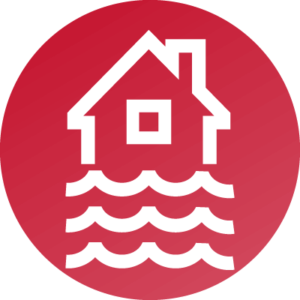
Flooding and water management
Rising sea water temperatures and the increased frequency and magnitude of extreme weather events have led to shifts in fish distribution and growth rates, thereby affecting operational practices in these industries and ecosystems.
Key actions
- Marine spatial planing for marine protection and sustainable fishery
- Risk assessment for future avalanche and earth movement changes and development of early warning systems
- Awareness raising, stakeholder involvement and risk assessment related to sea level rise and flooding risk in inhabited areas.
Contact us
Demonstration site leader
Rune Grand Graversen
rune.graversen[@]tromsfylke.no
Fishery and aquaculture
Andreas H. Hagset
andreas.hagset[@]tromsfylke.no
Keshav Paudel
keshav.p.paudel[@]uit.no
Kari Elida Eriksen
kari.e.eriksen[@]uit.no
Hazard risks
Louise Vick
louise.m.vick[@]uit.no
Christopher D'Amboise
christopher.dambois[@]uit.no
Kai-Uwe Eiselt
kai-uwe.eiselt[@]uit.no
Flooding and Water Management
Torill Nyseth
torill.nyseth[@]uit.no
Andreas H. Hagset
andreas.hagset[@]tromsfylke.no
Mina Benjegård
mina.e.benjegard[@]uit.no
Events
Date
News

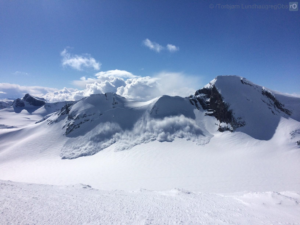
Navigating snow avalanche risks in Troms – Norway

Harnessing Earth Observation for Climate Change Solutions
Resources
Relevant sectors:
Municipality
Coastal zone planning
Public administration
Fishery
Sky tourism industry
National road service
Urban planning
Citizens
Urban developers
Our ambitions
We aim to create a regional Resilience Knowledge Booster with datasets, observing systems and knowledge resources from economic actors, citizens’ groups, research institutions and other stakeholders.
We also aim to provide the stakeholder community with modelling tools
to develop local and regional scenarios of climate change and future impacts.
We will develop a 4-dimensional digital twin of the coastal area, with all available knowledge of the territory and advanced visualisation techniques.
One of our ambitions is to co-create packages of innovative solutions and adaptation pathways using the digital twin and Resilience Knowledge Booster.
In addition, we aim to demonstrate outputs and best practices of the Resilience Knowledge Booster and digital twin to decision-making bodies to reinforce the Troms & Finnmark County planning activities.
We contribute to the adaptation and climate-proofing of Tromsø city’s infrastructural systems and urban water management in conjunction with a municipality project on climate adaptive development along the waterfront to pave the way for continuation of the Resilience Knowledge Booster as a stable initiative of UiT and the county administration, supporting climate change adaptation plans and the long-term resilience of the region, and medium-to-long-term financial planning based on IMPETUS adaptation pathways.
- Introductory meetings with stakeholders
- Introduce and engage key stakeholders to the digital tools and solutions being developed
- Develop digital tools
- Test digital tools with stakeholders and gather feedback
- Public engagement
- Apply and further integrate tools to support decision makers within the region
- Share tools and knowledge with others
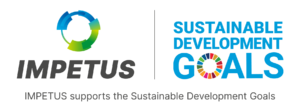
Issues
- Fish productivity and suitability of sites for aquaculture impacted by global warming, sea level changes, oceanographic variables, frequency and magnitude of extreme events.
- More precipitation and extreme weather exacerbate these problems and increase physical and biological risks, such as harmful algal blooms.
- Landslides, rockfalls, avalanches increasingly likely as climate change drives warming, intense precipitation, unstable snow cover, permafrost thawing, glacial retreat, and groundwater changes.
- Communities and infrastructure threatened by fjord tsunamis, river blockages and environmental destruction if high-risk slopes destabilise.
- Commercial and industrial sites affected by flooding from extreme sea levels in low-lying areas.
- The northern location and climate change factors may affect urban water systems.
Region-specific solutions
Early warning system for avalanches, rockslides, or landslides
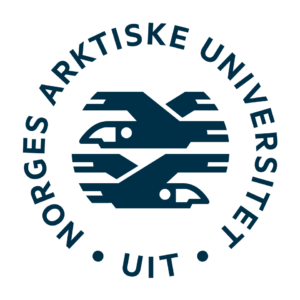
The risk posed to arctic communities from natural hazards is expected to change as the arctic is projected to become warmer and wetter under climate change.
To combat this mitigation measures in the form of early warning systems, hazard maps and other avoidance measures can be used as a risk reduction strategy. Two gravitational natural hazards that occur in the arctic are slushflows and rock avalanches. A greater understanding of the physical processes taking place during hazard events, and the initiation/timing of events supplies the responsible authorities with vital information to fine-tune the early warnign and forecasting systems. This work could lead to enhanced risk reduction in the form of planning avoidance measures.
Our approach:
- Increase the understanding of movements in unstable rock slope and how weather and climate may lead to catastropic rock avalanches. Data produced from the monitoring of the high-risk unstable rock slope Gámanjunni-3 in northern Norwawy will be analysed for movements under different weather and temperature changes.
- Develop a method for hazard mapping of the slushflow hazard. Development of a classification system for wet snow avalanches to slushflows is necessary to describe the diversity of behavior observed.
This work is linked with:
Digital Twin for freshwater and marine management

Evaluation of climate change risks is traditionally carried out via the crossing of results from impact modelling under different climate scenarios, vulnerability, and exposure assessment.
In most planning conditions the risk assessment is generated from the overlapping of different Geographic Information System (GIS) layers; an effective methodology that is not easy for non-technical people to interpret, however, and is difficult to use in stakeholder co-design processes.
Our approach:
- Demonstrate the potential of integrating state-of-the-art GIS representation of multiple variables with advanced visualisation techniques to generate a digital twin of the territory, making visualisation of risk areas and possible impacts much more effective and user friendly.
- Use the digital twin to support the co-design of Marine Spatial Planning decisions for better regulation of fishery, aquaculture, and other marine areas.
- Use the digital twin to support the co-design of climate-proofing actions to protect coastal cities from sea-level rise and flooding.
Our approach focuses on the co-creation of solutions, actively involving key stakeholders in both the design and validation of the tools. We use open datasets from national spatial data infrastructures, satellite derived variables and Copernicus services.
This work is linked with:
- Troms&Finnmark County Marine Spatial Planning programme 2021-2024
- EU Destination Earth Initiative, DestinE
- Water Framework Directive, Digital Single Market Strategy
- Netherlands Delta Program
- Greenathon by the Hellenic Ministry of Environment and Energy
Economic impact assessment of physical climate risk

Socio-Economic tools and risk projections enable the assessment of climate risks and the establishment of projections and metrics regarding future investments.
Our approach:
- Identify highly vulnerable hot-spots using open datasets for Copernicus services and satellite-derived variables.
- Transform this knowledge into a specific regional model and include this in the Resilience Knowledge Booster.
- Use the RKB and regional model to elaborate economic assessment metrics to aid decision making about investments and future mitigation plans.
This work is linked with:
- European Investment Bank
- European Central Bank

